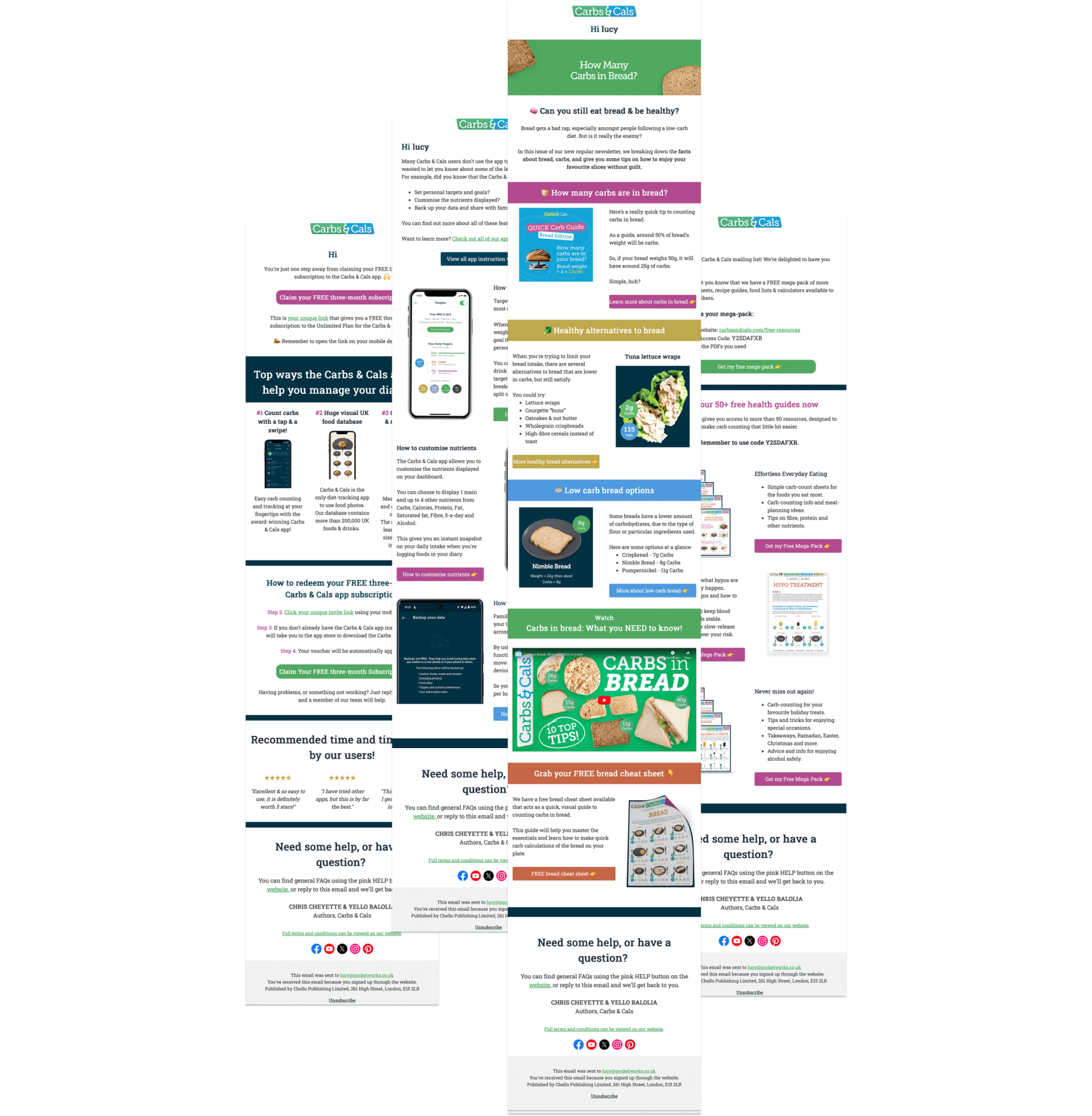Bread has become something of a controversial food in modern diets, with many people wondering whether they can enjoy bread as part of a healthy lifestyle.
Despite being a staple, bread often gets unfairly demonised by those trying to lose weight or following low-carb diets.
With the right knowledge about carb counting and smart portion control, you can continue to enjoy bread as part of a balanced, healthy diet. This comprehensive guide will help you navigate the world of bread carbs, from understanding how many carbs are in your favourite slice to discovering lower-carb alternatives that don’t sacrifice taste or satisfaction.
Is bread healthy?
| Ever since people became more aware of carbs in their diets, bread has been a forbidden food that rarely made it onto meal plans. Instead, those monitoring their carb intake have asked questions such as: ‘Is bread healthy?’ or ‘Can you eat bread and still lose weight?’ Despite this, 99.8% of British households buy bread.
Of course, there are various sizes and types of bread that can affect the carb content, as can the ingredients used to make the bread. While the carbs and calories in a slice of bread can quickly add up if you aren’t careful, bread shouldn’t be a forbidden food. By being aware of the number of carbs in bread and controlling portion sizes, it is possible to eat bread and still lose weight. In fact, certain types of bread can even be part of a healthy meal plan. |
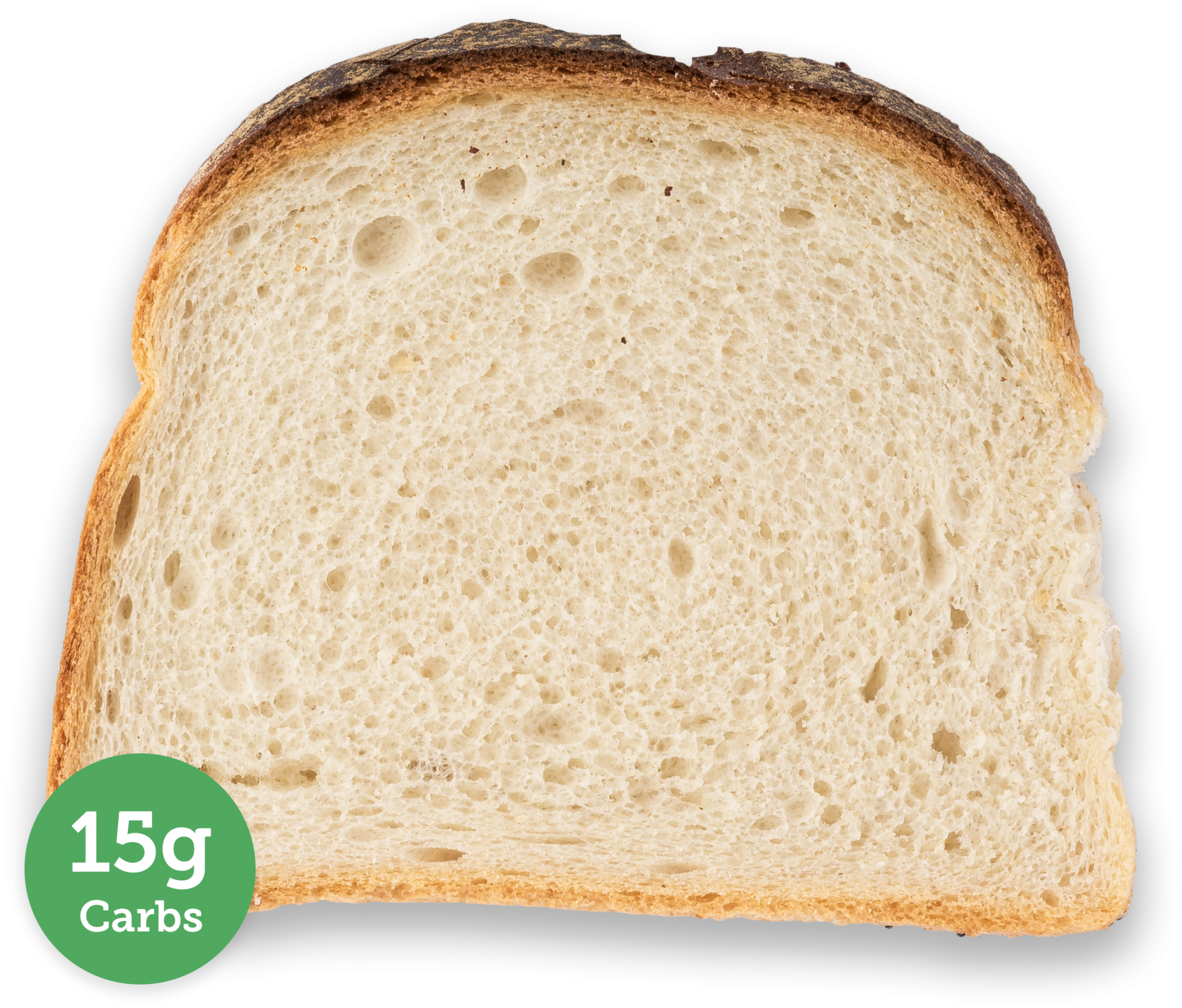
There are typically 15g of Carbs in a medium slice of white bread.
How many carbs in a slice of bread?
When it comes to how many carbs are in a slice of bread, the size of the slice of bread is the main determining factor for how many carbs it contains, rather than the type of flour used. A good rule to help you estimate the number of carbs in a slice of bread is that around 50% of the bread’s weight will be carbs. So if your bread weighs 50g, it will have around 25g of carbs.
If you slice bread yourself at home, you will find that we tend to cut larger slices by hand compared to shop-bought sliced bread. Similarly, when eating out, you will find that slices of bread in restaurants are larger, and therefore contain more carbs.
Serving size is the main determining factor for the amount of carbohydrates in bread; however, the type of flour used can also impact the bread’s other nutritional information, such as the level of fibre and protein.
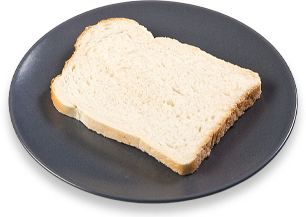
15g
Carbs
White Bread
Weight = 33g (medium slice)
Carbs = 15g / Fibre = 1g
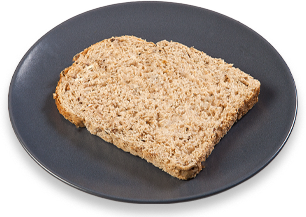
15g
Carbs
Granary Bread
Weight = 33g (medium slice)
Carbs = 15g / Fibre = 2g

15g
Carbs
Wholemeal Bread
Weight = 33g (medium slice)
Carbs = 15g / Fibre = 2g
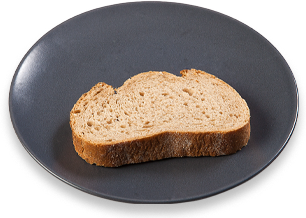
14g
Carbs
Rye Bread
Weight = 30g
Carbs = 14g / Fibre = 2g
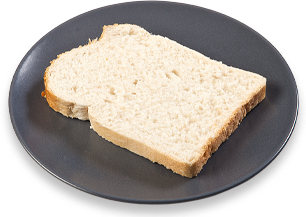
20g
Carbs
White Bread
Weight = 44g (thick slice)
Carbs = 20g / Fibre = 1g
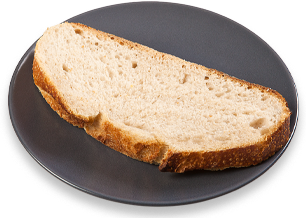
33g
Carbs
Sourdough Bread
Weight = 70g
Carbs = 33g / Fibre = 2g
*On average, a thin slice of bread contains 10g of carbs, a medium slice has 15g, and a thick slice has 20g.
Video
Carbs in Bread:
What you NEED to know!
Health benefits of bread
Bread is a staple food which plays a crucial role in the nutrition of almost every country in the world. Bread is considered a cheap source of energy and provides calories in the form of carbohydrates. Carbs are the main source of energy for your body, so eating bread provides your body with fuel and energy.
Depending on the type of bread that you buy, it can also be a good source of micronutrients, protein and fibre. Whole grain breads contain fibre, which provides a range of health and weight loss benefits. Fibre is important for gut health and helps you feel fuller and more satisfied after eating, making it easier to maintain the calorie deficit needed for weight loss.
Sourdough bread is made from dough that is fermented by a bacterial culture, which is believed to help with digestion. In addition, it has been suggested that populations that eat predominantly sourdough bread, such as French or Mediterranean diets, benefit from a lower risk of metabolic disease
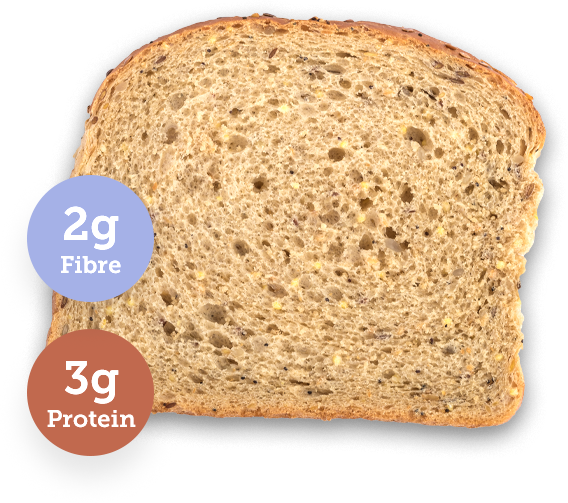
A slice of granary bread typically has 2g of Fibre and 3g of Protein.
How many carbs in a bread roll?
Similar to sliced bread, the number of carbs in a bread roll depends on the size and density of the roll. A bagel, for example, is much denser than a bap and contains more grams of carbohydrates, despite being a similar size.
Bread rolls come in a variety of shapes and sizes, from baps to ciabattas. They are typically made with white flour. However, other flours such as spelt and wholemeal can be used, which can boost the fibre content.
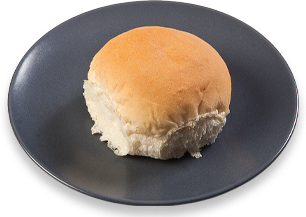
25g
Carbs
Bap
Weight = 48g (small)
Carbs = 25g / Protein = 4g
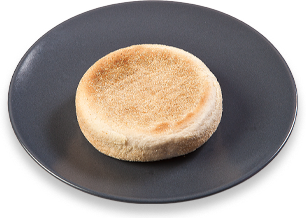
30g
Carbs
English Muffin
Weight = 68g
Carbs = 30g / Protein = 7g
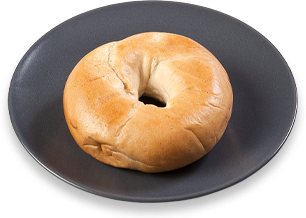
50g
Carbs
Bagel
Weight = 86g
Carbs = 50g / Protein = 9g
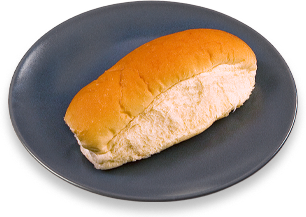
21g
Carbs
Hot Dog Roll
Weight = 41g
Carbs = 21g / Protein = 4g
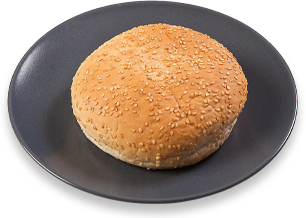
40g
Carbs
Burger Bun
Weight = 82g
Carbs = 40g / Protein = 7g
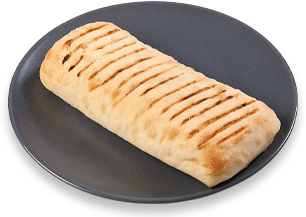
47g
Carbs
Panini
Weight = 100g
Carbs = 47g / Protein = 10g
*Remember to count the carbs of the filling in your roll when carb counting.
For example, if you have a sausage bap, the sausages could contain up to 5g carbs each.
What about carbs in whole grain bread? Is wholemeal bread better for my diet?
While whole grain, wholemeal, or whole wheat bread often has the same number of carbs as white bread, it generally contains more nutrients, including fibre. This is because whole wheat bread literally includes the whole of the wheat grain, rather than it being stripped away, which is what happens when white flour is made.
In the UK, white flour is fortified to put back what is lost during milling. However, whole grain bread is made the way nature intended wheat to be used and usually contains more vitamins and minerals, including fibre, iron, calcium and vitamin B.
Eating foods with fibre helps to make you feel fuller for longer, which can reduce food consumption, helping you stick to a low-carb diet. Wholewheat bread also has a lower glycaemic index, which has a lower impact on blood sugar levels.
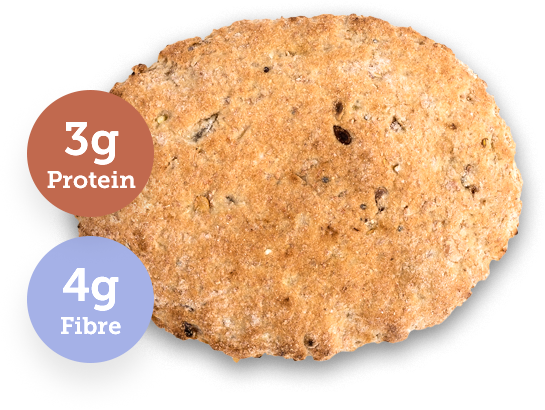
A wholemeal pitta bread typically has 3g of Protein and 4g of Fibre.
What are some healthy alternatives to bread?
If you are trying to limit your bread intake, there are several alternatives to bread that have a lower amount of carbohydrates. For example, many people use vegetables instead of bread when making a sandwich, burger or wrap. Cucumber or courgette is often used to make a sandwich; some people use lettuce instead of a tortilla wrap.
For a healthy breakfast alternative, try replacing white toast with a high-fibre cereal, such as jumbo oats with added nuts and berries. For a low-carb lunch option, swap your regular sandwich for a salad or a bowl of soup, such as leek and potato, carrot and lentil or sweet potato. If you normally have bread between meals as a snack, try having oatcakes and nut butter, houmous and carrot sticks, or a piece of fruit instead.
Aim for a single type of carbohydrate for your main meal, such as potatoes, rice or pasta (ideally wholemeal/brown varieties) instead of including additional bread. Also, try to have two or more portions of vegetables and a source of protein.
Switching to healthier alternatives is a great way to reduce the number of carbs you consume, without focusing solely on serving sizes.
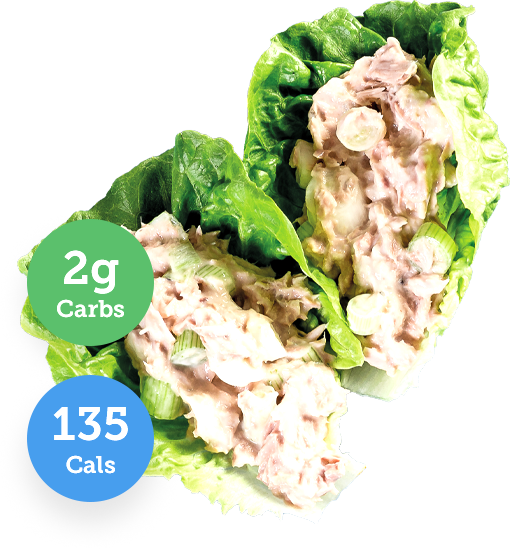
Tuna lettuce wraps are a healthy snack alternative to bread.
You can find the recipe in our VERY LOW CALORIE RECIPES & MEAL PLANS book.
How about carbs in low carb bread? Is low carb bread a good option?
Bread has a bad reputation as a high-carb food. However, it is still possible to eat bread on a low-carb diet- you simply need to be aware of portion sizes. How much you eat will be the main determining factor in how many carbs you consume. If you are aiming to have a lower carb intake, then choose thin or medium-sliced bread and go for high-fibre options.
Bread, like many other foods, comes in many different types, with some bread having a lower amount of carbohydrates due to the type of flour or a particular ingredient used.
Here are some examples of lower-carb bread choices. Take note of the portion sizes, which are likely to be smaller than most regular slices of bread.
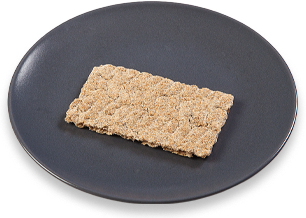
7g
Carbs
Crispbread
Weight = 11g
Carbs = 7g / Fibre = 2g
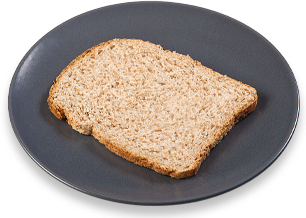
8g
Carbs
Nimble Bread
Weight = 22g (thin slice)
Carbs = 8g
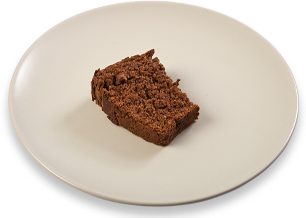
11g
Carbs
Pumpernickel
Weight = 30g
Carbs = 11g / Fibre = 3g
*Having smaller portions can be helpful if you are trying to reduce your carb or calorie consumption.
Which bread contains the most fibre?
In the UK, it is recommended that adults eat at least 30g of fibre a day. However, many of us fail to reach even half of that. Eating a higher fibre bread is a great way to help reach your daily fibre goal. Dietary fibre is a valuable component of our diet and essential for good health. Fibre keeps the bowels healthy, lowers cholesterol and keeps you fuller for longer, thus aiding weight loss.
60-70% of the bread eaten in the UK is white. However, when white flour is milled, most of the fibre is removed in the process. Compared to white bread, wholemeal and other high fibre breads like those listed below can contain more than double the amount of fibre.
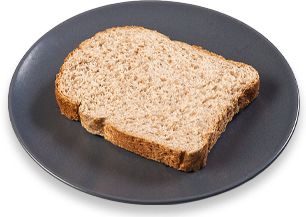
3g
Fibre
Wholemeal Bread
Weight = 44g (thick slice)
Fibre = 3g / Carbs = 18g
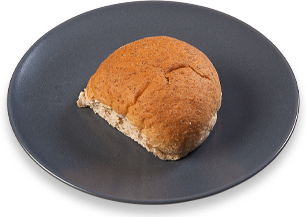
3g
Fibre
Wholemeal Bap
Weight = 51g (small)
Fibre = 3g / Carbs = 24g
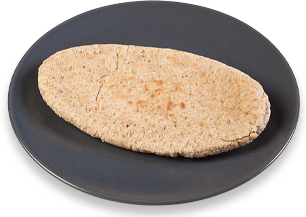
3g
Fibre
Wholemeal Pitta Bread
Weight = 60g
Fibre = 3g / Carbs = 27g
*2 slices of thick wholemeal bread a day will contribute 6g fibre (20% of your recommended daily intake).
Want to Learn More?
Grab a copy of Carb & Calorie Counter
The multi-award-winning Carb & Calorie Counter book is your definitive, expert-approved guide to carb and calorie counting.
- Over 1700+ high-quality food photos
- Up to six portion sizes per food
- At-a-glance carbs and key nutrients
- The Original #1 Bestseller
With the “Carb-Counting Bible”, a single flick of the page is all you need to plan nutritious, carb-counted meals.
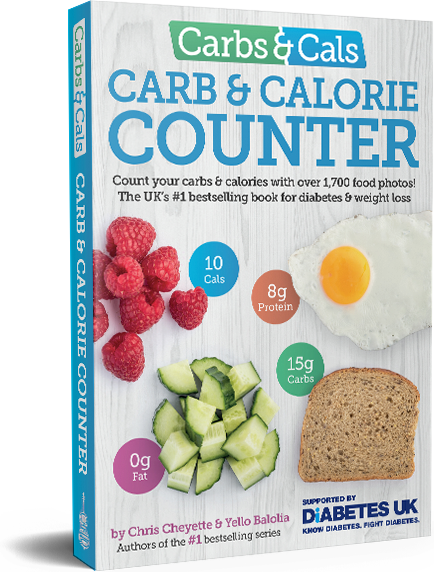
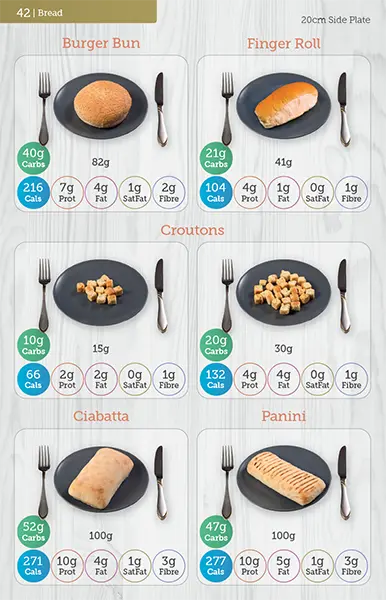
Contains a whole chapter with 66 photos of different types of bread!
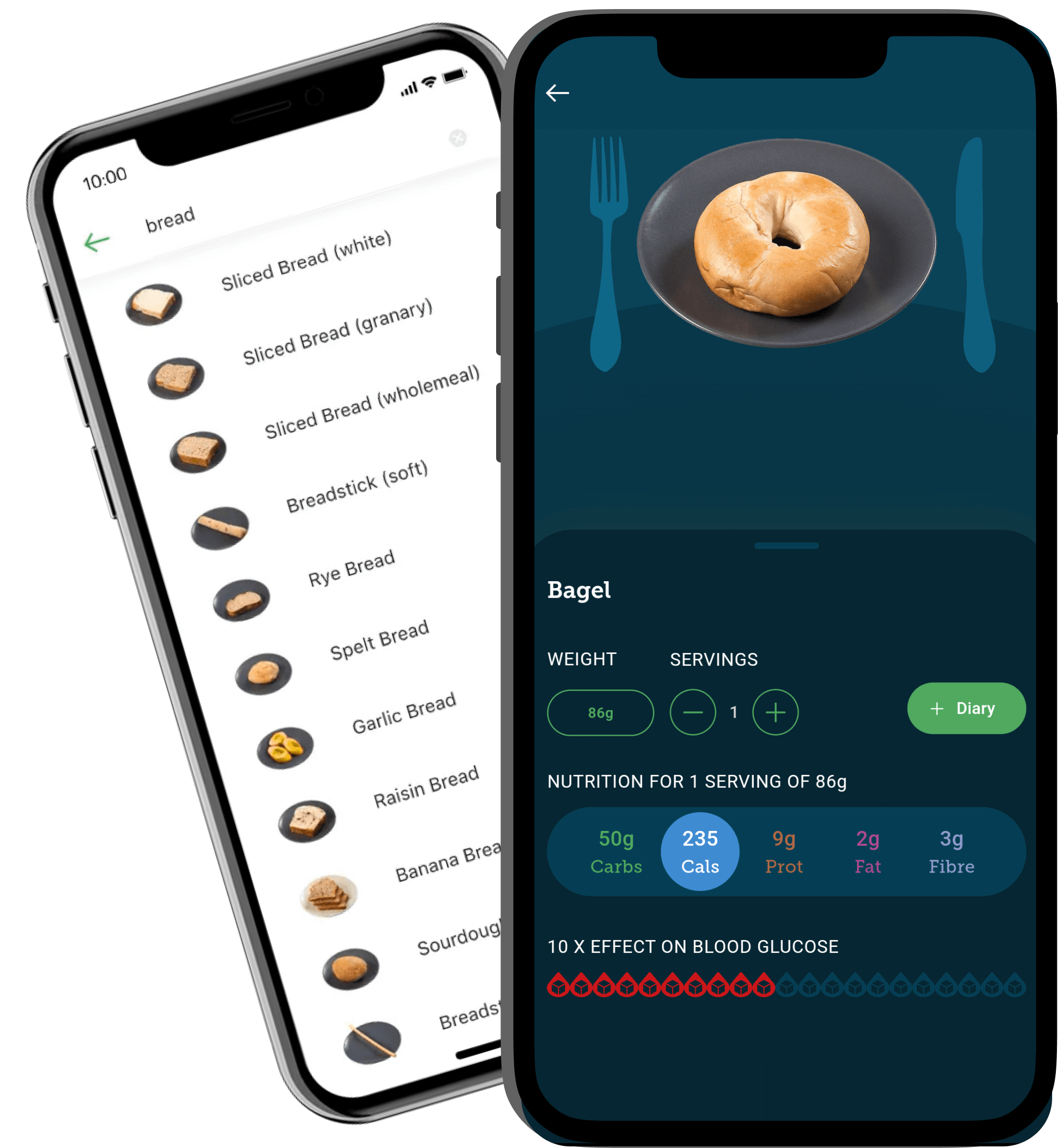
Sign up to the Carbs & Cals mailing list
Want to learn more about carb counting and the role of food in managing your health? Sign up to our mailing list!
